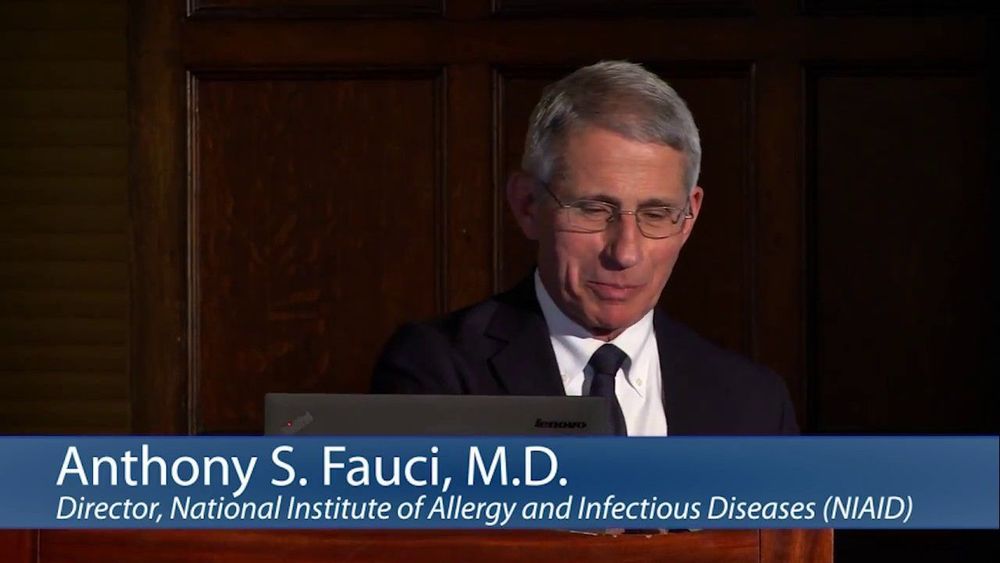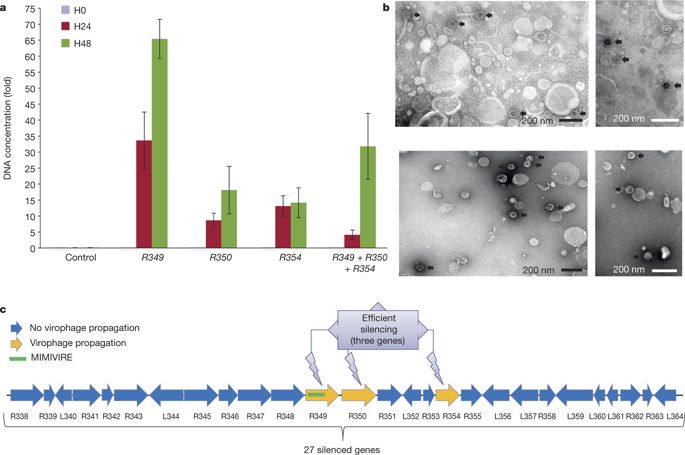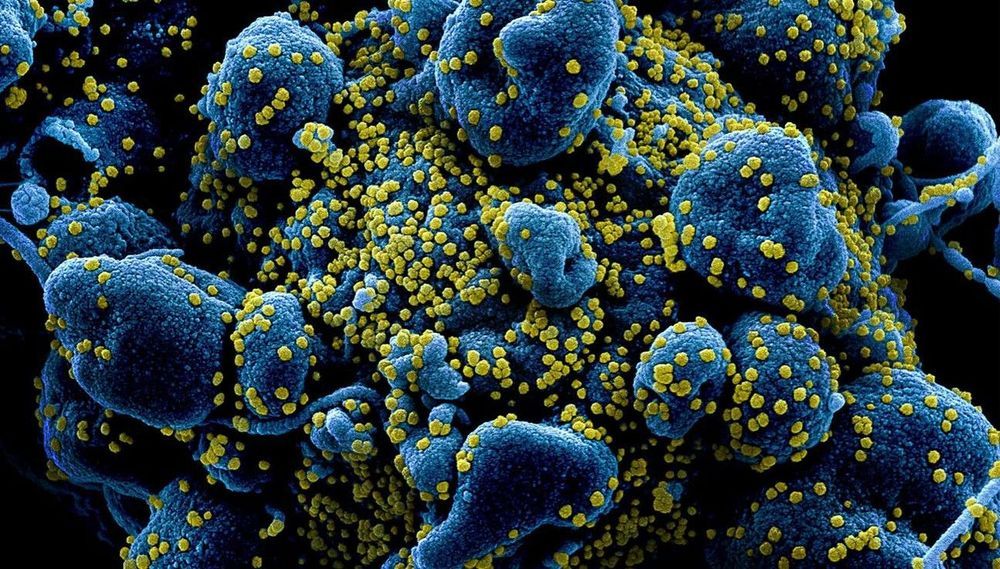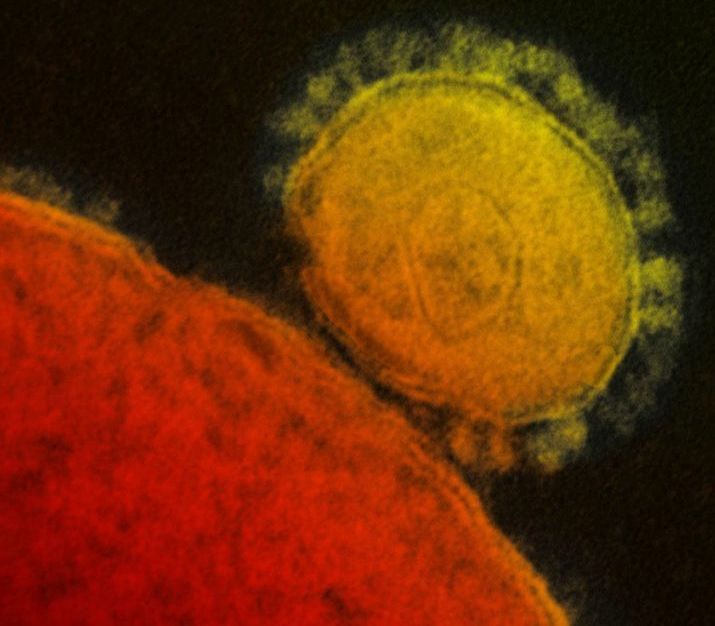Archive for the ‘biotech/medical’ category: Page 1644
Apr 19, 2020
MIMIVIRE is a defence system in mimivirus that confers resistance to virophage
Posted by Fyodor Rouge in categories: biotech/medical, electronics
👽 Giant Viruses : “Mimiviruses”
(Jan 2016)
Fyodor R., issue 3, refund institute
Continue reading “MIMIVIRE is a defence system in mimivirus that confers resistance to virophage” »
Apr 19, 2020
Antibody responses to SARS-CoV-2 in patients of novel coronavirus disease 2019
Posted by Fyodor Rouge in category: biotech/medical
The novel coronavirus SARS-CoV-2 is a newly emerging virus. The antibody response in infected patient remains largely unknown, and the clinical values of antibody testing have not been fully demonstrated.
Methods
A total of 173 patients with SARS-CoV-2 infection were enrolled. Their serial plasma samples (n=535) collected during the hospitalization were tested for total antibodies (Ab), IgM and IgG against SARS-CoV-2. The dynamics of antibodies with the disease progress was analyzed.
Apr 19, 2020
Indoor Precautions Essential to Stem Airborne COVID-19 – The World Should Face the Reality
Posted by Saúl Morales Rodriguéz in categories: biotech/medical, health
Researchers are urging health authorities to immediately recognize the role of airborne transmission of COVID-19 virus droplets from an infected person beyond 1.5m in order to stem the disease’s spread.
Apr 19, 2020
CRISPR Therapeutics braces for ‘severe impact’ from COVID-19 crisis
Posted by Saúl Morales Rodriguéz in category: biotech/medical
April 1, 2020
It was supposed to be an exciting time of next-gen science, where CRISPR gene editing was being used in the first series of human trials in the hope this tech could help cure a range of diseases.
But one of its proponents, CRISPR Therapeutics, has, alongside a growing number of biopharmas, admitted the spreading COVID-19 pandemic is starting to see it be “adversely affected.”
Continue reading “CRISPR Therapeutics braces for ‘severe impact’ from COVID-19 crisis” »
Apr 19, 2020
Vaccins et traitements contre le Covid-19 : les principales pistes
Posted by Saúl Morales Rodriguéz in category: biotech/medical
La communauté scientifique est en ordre de bataille pour lutter contre le SARS-CoV-2 et mettre au point un traitement ou un vaccin. Quelles sont les voies les plus prometteuses?
Apr 19, 2020
Lab-Made Coronavirus Triggers Debate
Posted by Omuterema Akhahenda in category: biotech/medical
Circa 2015. The nature publishing has since been pulled down, but I am looking for it. I think I downloaded the pdf.
Infectious-disease researcher at the University of North Carolina at Chapel Hill, last week (November 9) published a study on his team’s efforts to engineer a virus with the surface protein of the SHC014 coronavirus, found in horseshoe bats in China, and the backbone of one that causes human-like severe acute respiratory syndrome (SARS) in mice. The hybrid virus could infect human airway cells and caused disease in mice, according to the team’s results, which were published in Nature Medicine.
Update (March 11, 2020): On social media and news outlets, a theory has circulated that the coronavirus at the root of the COVID-19 outbreak originated in a research lab. Scientists say there is no evidence that the SARS-CoV-2 virus escaped from a lab.
Apr 19, 2020
No evidence COVID-19 transmits through food or packaging
Posted by Quinn Sena in categories: biotech/medical, food
AMES, Iowa — Over the past month, false information about COVID-19 and food and food packaging has been reported in the media, websites and blogs, and shared through social media, note food safety and nutrition and wellness specialists with Iowa State University Extension and Outreach. Angela Shaw, Anirudh Naig, and Shannon Coleman want Iowans to know there is no evidence that COVID-19 is transmitted through food and food packaging.
Shaw is a food safety state specialist and associate professor in the ISU Department of Food Science and Human Nutrition. Naig is a food safety state specialist and associate professor in the ISU Department of Apparel, Events, and Hospitality Management. Coleman is an assistant professor and nutrition and wellness state specialist in the ISU Department of Food Science and Human Nutrition.
Apr 19, 2020
Indian Army has disinfectant drone, UV gun that kills virus in seconds in its Covid arsenal
Posted by Saúl Morales Rodriguéz in categories: 3D printing, biotech/medical, computing, drones
The cost of the sanitiser would be Rs 800, and the Army can turn out 10 pieces a day.
The third innovation is a 3D-printed mask priced at Rs 1,200 apiece. Other products being devised include thermal scanners and anti-aerosalination boxes to keep doctors safe. The boxes are made up of transparent acrylic sheets and kept over patients to protect doctors and other healthcare workers from infection. Holes cut into the box help medical staff administer treatment to the patient without coming into direct contact.
The Army is just one of several sections across Indian society that are trying to chip in for the country’s battle against coronavirus, from scientists who have banded together to bust myths to IITians churning out cost-effective and innovative solutions to ease the burden on the healthcare framework.
Apr 19, 2020
New universal Ebola vaccine may fight all four virus species that infect humans
Posted by Omuterema Akhahenda in category: biotech/medical
CINCINNATI — Infectious disease scientists report early development of a potential universal vaccine for Ebola viruses that preclinical tests show might neutralize all four species of these deadly viruses infecting people in recent outbreaks, mainly in Africa.
Scientists at Cincinnati Children’s Hospital Medical Center report their preclinical results in the Journal of Virology, published by the American Society for Microbiology.
Although still in early preclinical testing, researchers report that their data indicate that the prospective vaccine has potential to be a stand-alone protection from Ebola. It also could broaden and extend the durability of protective immunity induced by current live vaccines already being tested in clinical trials against individual Ebola virus species, said Karnail Singh, PhD, the study’s co-principal investigator in the Division of Infectious Diseases.


















